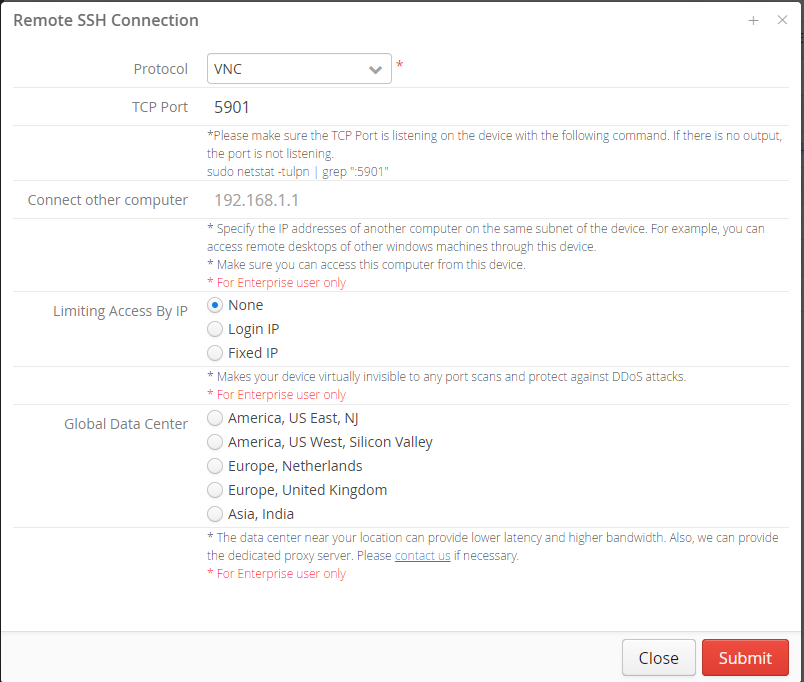RemoteIoT P2P technology has revolutionized the way we interact with devices remotely. With the rise of the Internet of Things (IoT), the demand for secure and efficient remote communication solutions has grown exponentially. Using Raspberry Pi as a platform, developers and enthusiasts can create powerful remote IoT applications that connect devices peer-to-peer without the need for a central server. This article dives deep into the world of RemoteIoT P2P and Raspberry Pi, offering insights and practical guidance for implementation.
Whether you're a beginner or an experienced developer, this guide will help you understand the fundamentals of RemoteIoT P2P and how Raspberry Pi can be leveraged to build scalable and secure IoT systems. From setting up your Raspberry Pi to integrating advanced P2P protocols, we'll cover everything you need to know.
In today's interconnected world, the ability to control and monitor devices remotely is no longer a luxury but a necessity. This article aims to equip you with the knowledge and tools to harness the power of RemoteIoT P2P using Raspberry Pi, enabling you to create innovative solutions for various industries.
- Sd Hub Movie Download Your Ultimate Guide To Legal Streaming And Downloads
- 4hd Hub 4u Your Ultimate Guide To Cuttingedge Technology And Entertainment
Table of Contents
- Introduction to RemoteIoT P2P with Raspberry Pi
- Overview of Raspberry Pi
- Understanding P2P Technology
- Basics of RemoteIoT
- Setting Up Raspberry Pi for RemoteIoT P2P
- Software Requirements for RemoteIoT P2P
- Ensuring Security in RemoteIoT P2P Systems
- Applications of RemoteIoT P2P
- Optimizing RemoteIoT P2P Performance
- Troubleshooting Common Issues
- Conclusion and Call to Action
Introduction to RemoteIoT P2P with Raspberry Pi
RemoteIoT P2P technology allows devices to communicate directly without relying on centralized servers, making it ideal for IoT applications. Raspberry Pi, a versatile and affordable single-board computer, serves as an excellent platform for implementing such systems. By combining the flexibility of Raspberry Pi with the efficiency of P2P communication, developers can create robust IoT solutions tailored to specific needs.
Why Choose Raspberry Pi for RemoteIoT?
Raspberry Pi offers several advantages for RemoteIoT P2P projects:
- Cost-effective hardware
- Extensive community support
- Compatibility with various operating systems
- Wide range of GPIO pins for interfacing with external devices
Overview of Raspberry Pi
Raspberry Pi is a series of small single-board computers developed by the Raspberry Pi Foundation. It was initially designed to promote computer science education but has since become popular among hobbyists and professionals alike. The latest models, such as the Raspberry Pi 4, offer powerful specifications, including multi-core processors and gigabit Ethernet.
- Sdmoviespoint 2 Your Ultimate Guide To Downloading Movies
- Wwwmovierulztelugu Your Ultimate Guide To Telugu Movies
Key Features of Raspberry Pi
- Quad-core ARM processors
- Up to 8GB RAM
- Multiple USB ports
- HDMI output for video
- Wi-Fi and Bluetooth connectivity
Understanding P2P Technology
Peer-to-peer (P2P) technology enables devices to communicate directly, eliminating the need for intermediaries like servers. This decentralized approach offers several benefits, including improved security, reduced latency, and enhanced scalability. In the context of RemoteIoT, P2P technology allows IoT devices to exchange data seamlessly, even in environments with limited connectivity.
Advantages of P2P Technology
- Reduced dependency on centralized infrastructure
- Lower operational costs
- Enhanced privacy and security
Basics of RemoteIoT
RemoteIoT refers to the ability to control and monitor IoT devices from a remote location. This technology is widely used in various industries, including smart homes, agriculture, healthcare, and manufacturing. By integrating P2P protocols, RemoteIoT systems can achieve higher levels of efficiency and reliability.
Components of a RemoteIoT System
- Sensors and actuators
- Communication modules
- Cloud or P2P networking
- Control interfaces
Setting Up Raspberry Pi for RemoteIoT P2P
Setting up Raspberry Pi for RemoteIoT P2P involves several steps, including hardware preparation, software installation, and network configuration. Below is a step-by-step guide to help you get started:
Hardware Requirements
- Raspberry Pi board
- MicroSD card with pre-installed OS
- Power supply
- Network adapter (optional)
Software Installation
Install the latest version of Raspberry Pi OS and configure it according to your requirements. Use tools like `ssh` and `scp` to manage your device remotely.
Software Requirements for RemoteIoT P2P
Several software tools are essential for implementing RemoteIoT P2P on Raspberry Pi:
Key Software Tools
- Python for scripting and automation
- MQTT or CoAP for message brokering
- Node.js for server-side scripting
Ensuring Security in RemoteIoT P2P Systems
Security is a critical concern in RemoteIoT P2P systems. To protect your devices and data, implement the following best practices:
Security Measures
- Use strong encryption protocols
- Enable two-factor authentication
- Regularly update firmware and software
Applications of RemoteIoT P2P
RemoteIoT P2P technology finds applications in various domains:
Smart Home Automation
Control lighting, temperature, and security systems remotely using P2P communication.
Industrial IoT
Monitor and manage industrial equipment in real-time, improving efficiency and reducing downtime.
Optimizing RemoteIoT P2P Performance
To optimize the performance of your RemoteIoT P2P system, consider the following tips:
Performance Optimization Tips
- Minimize data transfer overhead
- Use efficient communication protocols
- Implement load balancing techniques
Troubleshooting Common Issues
Encountering issues while setting up or operating your RemoteIoT P2P system? Here are some common problems and their solutions:
Connection Issues
Ensure proper network configuration and check for any firewall restrictions.
Conclusion and Call to Action
In conclusion, RemoteIoT P2P technology, when combined with Raspberry Pi, offers endless possibilities for creating innovative IoT solutions. By following the guidelines outlined in this article, you can build secure, efficient, and scalable systems tailored to your needs.
We encourage you to share your thoughts and experiences in the comments section below. Additionally, explore our other articles for more insights into IoT and related technologies. Together, let's shape the future of connectivity and automation!
References:
- Sdmoviespoint2 2025 Your Ultimate Guide To Streaming Movies Online
- Hd Hub 2 Movies Your Ultimate Guide To Streaming Highquality Films


